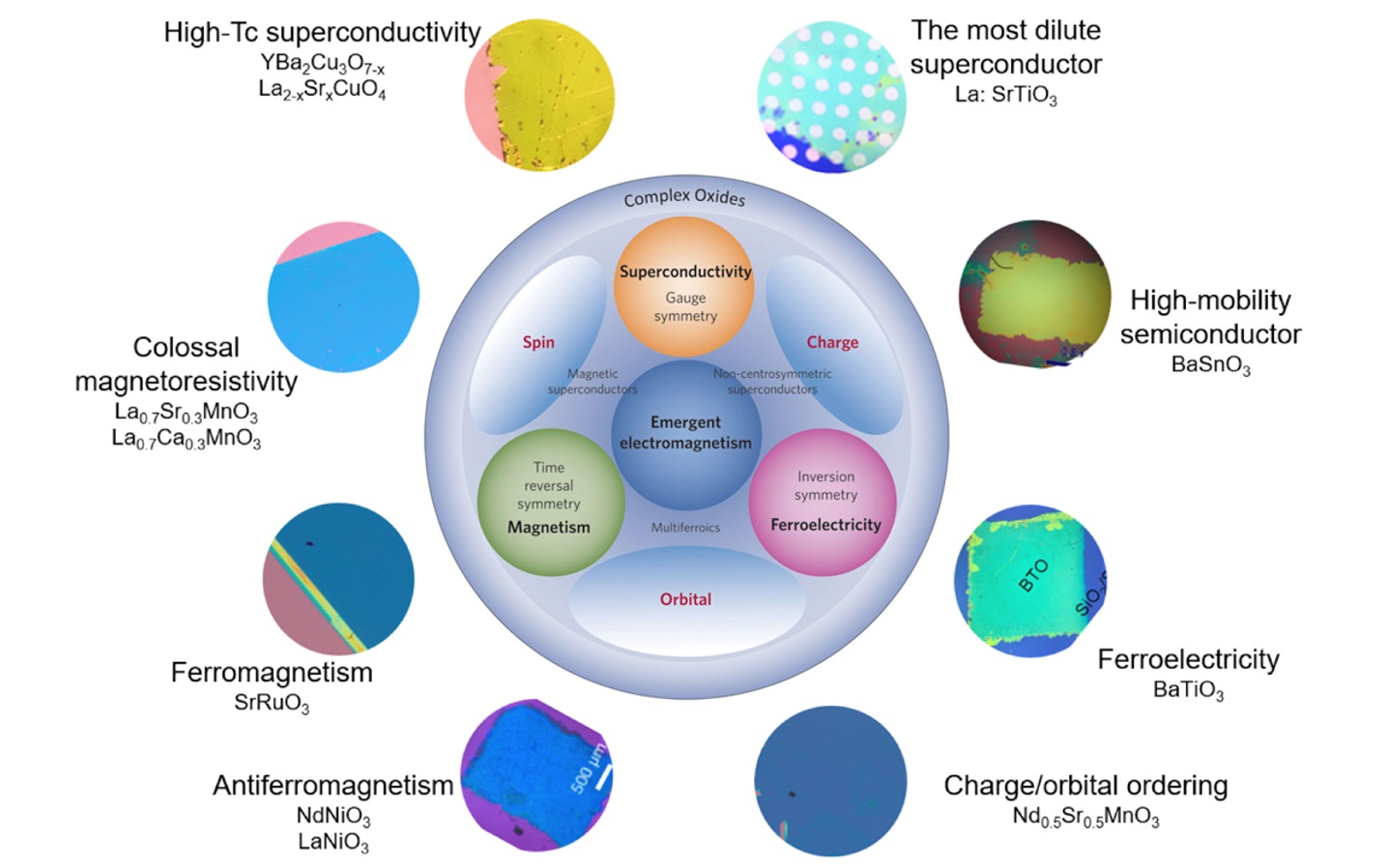
The atomic-scale materials design is the starting point of our research. We synthesize complex oxide thin film heterostructures & freestanding membranes (Pulsed laser deposition, PLD) and layers of metal chalcogenides (chemical vapor deposition, CVD), which can be further manipulated and assembled into devices. By employing electronic transport, electron microscopies, and optical spectroscopic tools available in our group (and via collaborations), we aim to answer unsolved questions in condensed matters as well as exploring new applications.

Unconventional strain states in oxide quantum materials
Control of atomic spacing is of fundamental importance to design materials and their properties. Quantum materials, where electron-lattice interactions drive emergent behaviors, have revealed diverse strain-tunable ground states and novel functionalities. The mechanical flexibility of 2D oxide materials allows us to push beyond traditional thin-film epitaxy and bulk crystal constraints. By engineering unconventional strain states—with freely adjustable magnitudes and directions not limited by epitaxial conditions—we seek to explore new phase space previously inaccessible.
2D heterointerfaces
The famous quote from Nobel laureate Herbert Kroemer, “the interface is the device,” represents semiconductor heterostructures at the foundation of current information technology. Beyond the silicon industry, now we are witnessing an explosion of research on artificial 2D interfaces created either by thin film epitaxy or mechanical stacking. We are particularly interested in 1) moiré interfaces of oxide membranes of unique atomic/electronic structures and 2) heterointerfaces between oxide membranes and other 2D van der Waals materials. Understanding how different physical properties transcend across interfaces will guide us to predict/design collective behaviors in solid state systems.
2D oxides for energy-efficient electronics
The ordered electromagnetic states and phase transitions in complex oxides present exciting opportunities for next-generation electronics beyond the limits of Moore’s law. Our research focuses on nanoscale phase evolution and the control of switching phenomena, with potential applications in neuromorphic computing and energy-efficient data storage. By combining in-situ and ex-situ switching experiments with advanced electron microscopy of freestanding oxide membranes, we aim to uncover atomic-scale structure-property relationships, enabling the design of new materials for energy-efficient electronic devices.